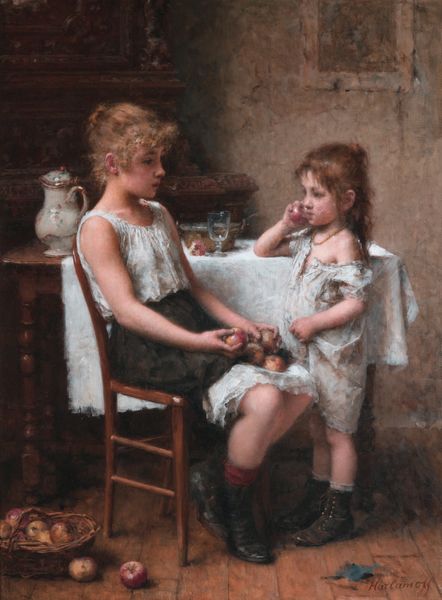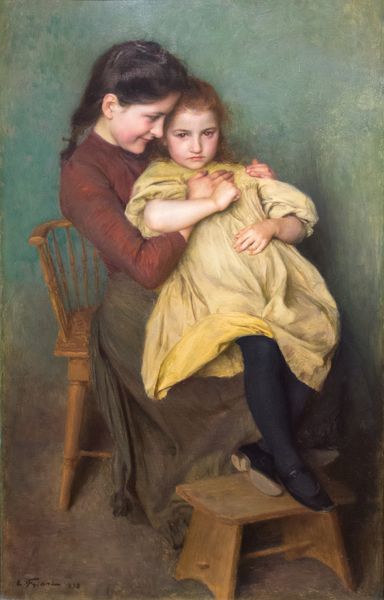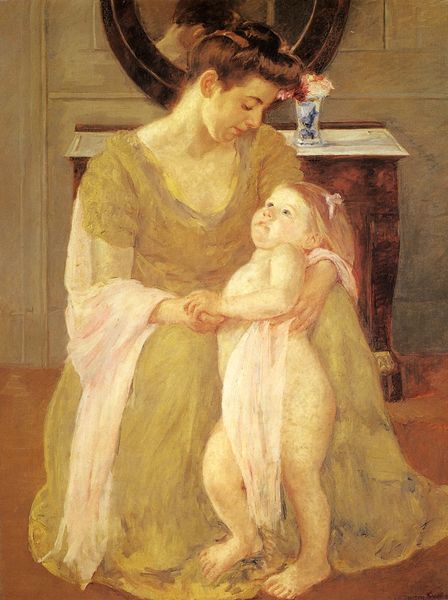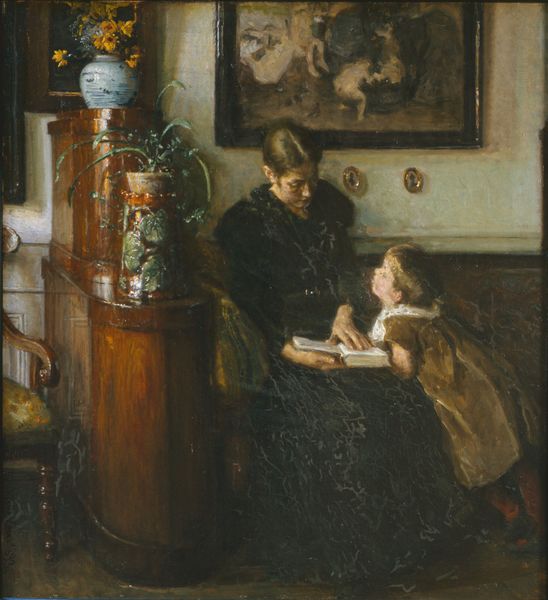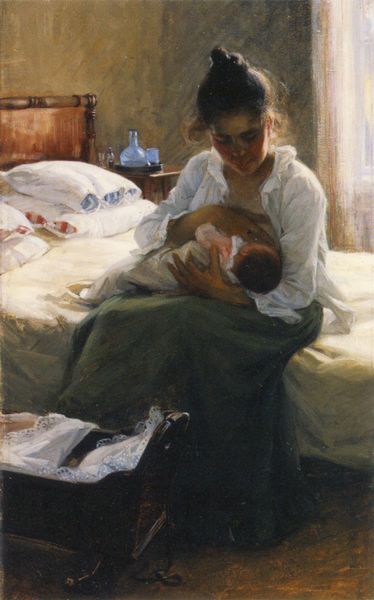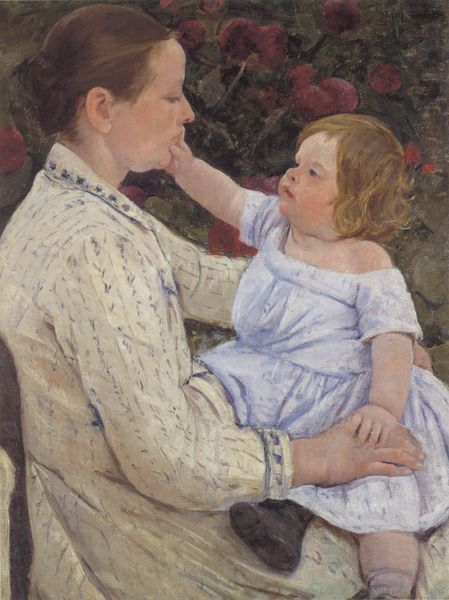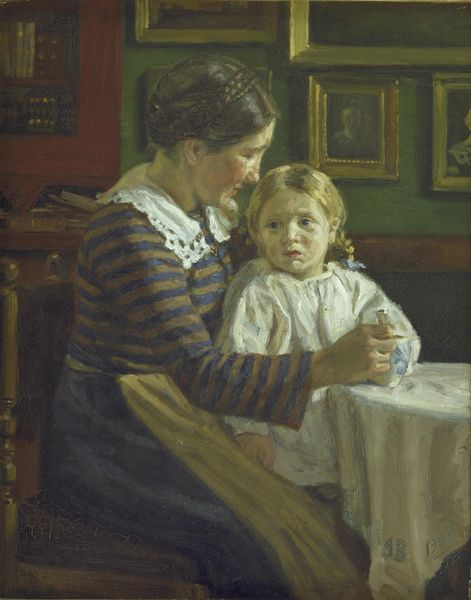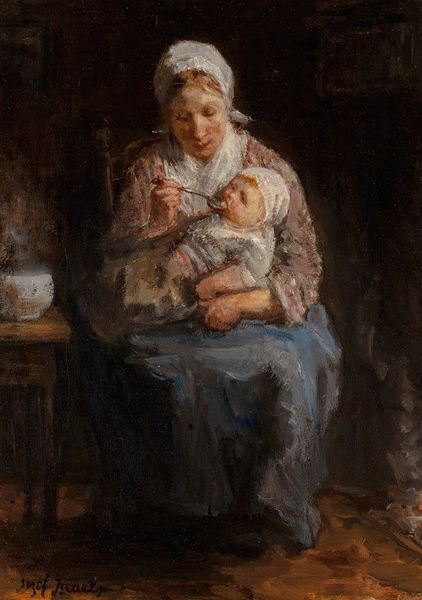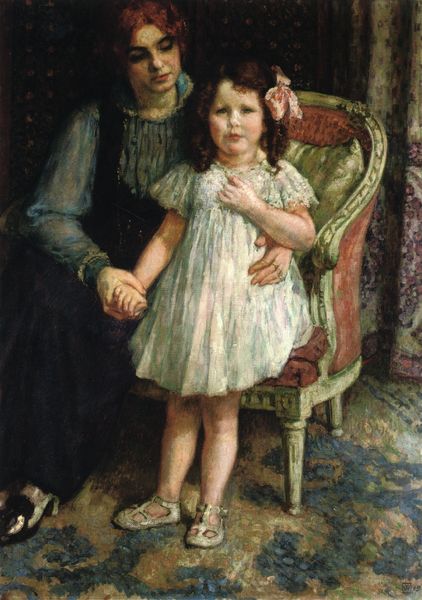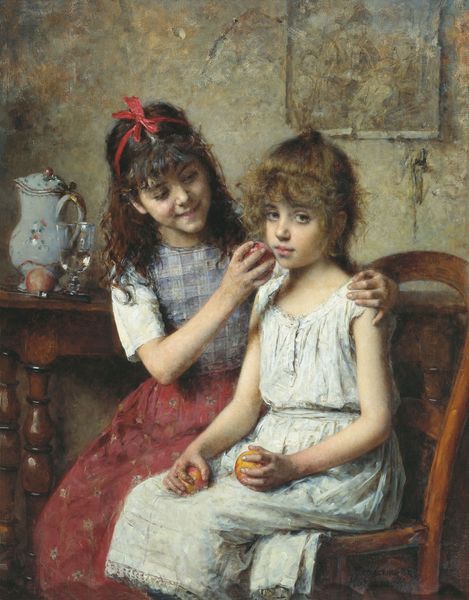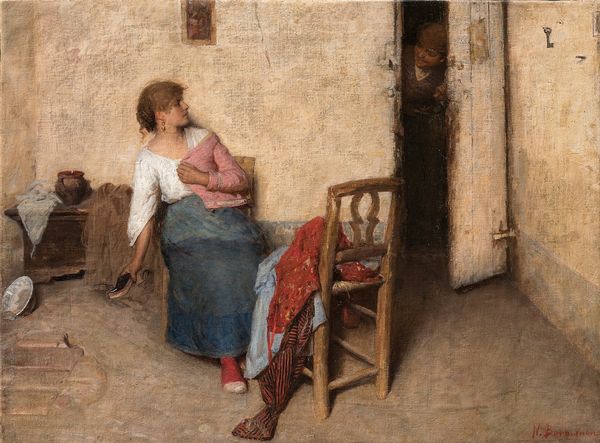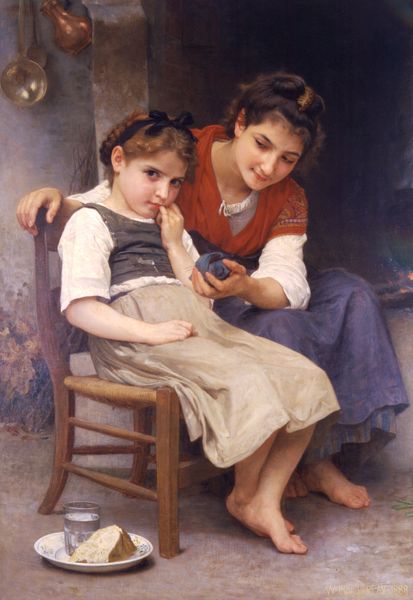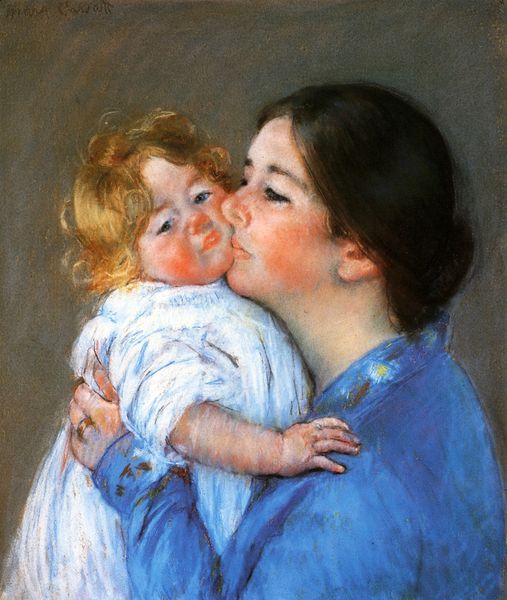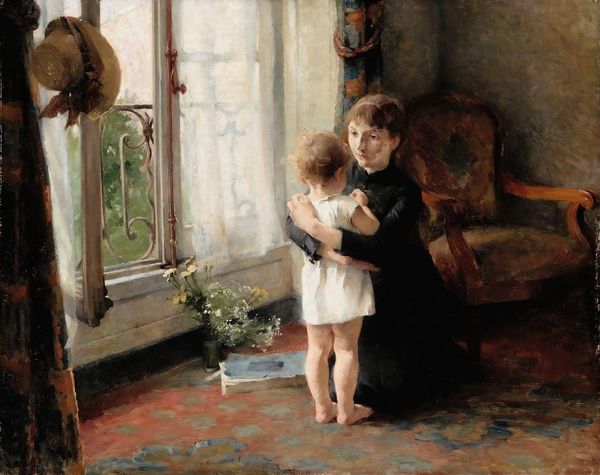
Copyright: Public domain
Editor: Here we have Alexei Harlamoff's "Moody Girl," painted around 1900, using oil on canvas. There’s a gentleness that emanates from this genre scene. I am struck by the contrast in textures: the smoothness of the mother's face compared to the rough rendering of the wall behind. How would you interpret this work? Curator: This painting invites us to closely consider its formal elements. Note how the artist orchestrates a contrast between light and shadow, not just to create depth, but also to draw attention to particular aspects of the composition. The luminosity bathing the figures directs our gaze. How does the artist's deployment of chiaroscuro serve to highlight the central theme, in your view? Editor: I think the darkness in the background makes the figures the undeniable focal point. Is there a symbolic intention to the artist’s color choices here? The girl is in almost pastel shades, as contrasted by the mother's earthier skin tones. Curator: Indeed. Consider the way the painter utilizes the textured brushstrokes to suggest form and volume, yet stops short of absolute realism. It is less about exactitude and more about imbuing the painting with a sense of emotion and movement. How does the layering of colors contribute to the emotional tenor of the scene? Editor: The softer tones give the work an impressionistic feel. The composition certainly leans into sentimentality. I didn't recognize that tension at first. I was too focused on the figures and missed the painterly approach, as well as that dynamic tension between romanticism and impressionism in the brushwork. Curator: Exactly. And through an analysis of these visual strategies, we gain insight into the artist’s manipulation of form and color to evoke feelings in the viewer. This demonstrates how an aesthetic reading of Harlamoff can unlock fresh interpretative possibilities.
Comments
No comments
Be the first to comment and join the conversation on the ultimate creative platform.
